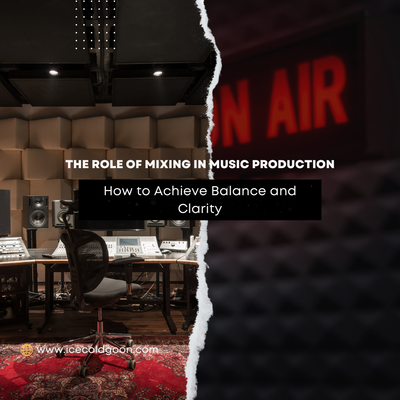What Does Mastering Do To A Mix?
Overview
Definition of Mastering
Mastering is the final step in the audio production process, where a mastering engineer applies various techniques to ensure that the mix sounds polished and professional. It involves subtle adjustments to the overall sound, including equalization, compression, and stereo imaging. Mastering aims to enhance the audio quality, ensure consistency across tracks, and optimize playback on different systems. It is a crucial step in preparing a mix for commercial release, as it adds the final touches and gives the mix a professional sound output.
Purpose of Mastering
Mastering aims to polish and finalize a mix, ensuring that it sounds its best across different playback systems and platforms. Mastering involves a series of technical and creative processes that address various aspects of the audio, such as dynamic range, frequency balance, and stereo imaging. By applying equalization, compression, and stereo imaging, mastering engineers can enhance the overall sound quality and make the mix more cohesive and balanced. Additionally, mastering helps to optimize the mix for different listening environments and playback devices, ensuring a consistent and enjoyable listening experience for the audience.
Process of Mastering
Mastering involves several steps to ensure the final mix is polished and ready for distribution. First, the audio engineer carefully listens to the mix and adjusts the overall balance and tonality using equalization. Next, compression is applied to control the dynamic range and ensure the mix sounds consistent across different playback systems. Finally, stereo imaging techniques are used to enhance the width and depth of the mix, creating a more immersive listening experience. Through this meticulous process, mastering brings out the best qualities of the mix and prepares it for a professional and commercial release.
Importance of Mastering
Enhances Audio Quality
Enhancing audio quality is one of the critical benefits of mastering. During mastering, EQ adjustments ensure that each mix element is balanced and sounds its best. This helps to enhance the clarity, depth, and overall tonal balance of the audio. Additionally, noise reduction techniques can remove or minimize unwanted noise or imperfections. The result is a polished and professional sound pleasing to the listener's ear.
Ensures Consistency
Ensuring consistency is a crucial aspect of the mastering process. Consistency refers to the uniformity of audio levels, tonal balance, and overall sound quality throughout the mix. By carefully adjusting the dynamics and frequencies of each element in the mix, mastering engineers ensure that the final product sounds cohesive and balanced. This helps to create a seamless listening experience for the audience, whether on different devices or in different environments. Consistency is achieved through level matching, tonal shaping, and dynamic control. By maintaining consistency, mastering ensures that the mix translates well across other playback systems and platforms, allowing the music to be enjoyed by a wider audience.
Optimizes Playback
Optimizing playback is a crucial aspect of the mastering process. It ensures the final mix sounds consistent and balanced across different playback systems, such as speakers, headphones, or car stereos. Mastering engineers can create a mix that translates well on various devices by carefully adjusting the dynamic range and frequency response. Also, mastering helps eliminate technical issues that may arise during playback, such as clipping or excessive sibilance. This attention to detail in optimizing playback is essential for delivering a high-quality listening experience to the audience.
Mastering Techniques
Equalization
Equalization is a crucial step in the mastering process. It involves adjusting the frequency balance of a mix to ensure that each element is clear and well-defined. EQ can enhance the tonal characteristics of individual instruments, correct imbalances, and create a cohesive sound. By carefully sculpting the frequency spectrum, mastering engineers can bring out the best in a mix and make it sound more polished and professional.
Compression
Compression is a crucial mastering technique that plays a significant role in shaping the dynamics of a mix. By reducing the dynamic range and controlling the levels of different elements, compression helps to even out the overall volume and bring out the details in the music. It also adds punch and impact to the mix, making it sound more polished and professional. Additionally, compression can be used creatively to emphasize certain elements or create unique sonic effects. Overall, mastering with compression is essential in achieving a well-balanced and cohesive sound in a mix.
Stereo Imaging
Stereo imaging is an essential technique in the mastering process. It involves manipulating the stereo field to create a sense of width and depth in the mix. By adjusting the placement and balance of audio elements, stereo imaging can enhance the overall spatial perception of the music. This technique is commonly used to create a more immersive listening experience and to ensure that the mix translates well across different playback systems.
Conclusion
Final Touches to a Mix
After the meticulous equalization, compression, and stereo imaging, the final touches are applied to a mix during the mastering stage. These final touches include limiting the dynamic range, adding depth with reverb and delay, and enhancing the overall balance of the mix. Mastering involves sequencing the tracks and creating a cohesive flow between them. These final adjustments ensure the mix is ready for commercial release, with a professional sound output that captivates the listeners and stands out in the competitive music industry.
Professional Sound Output
Professional sound output is a crucial aspect of the mastering process. It ensures that the final mix is polished and ready for commercial release. By applying various mastering techniques such as equalization, compression, and stereo imaging, the audio engineer can enhance the mix's clarity, balance, and depth. Additionally, mastering helps eliminate any audio inconsistencies, resulting in a more cohesive and enjoyable listening experience. The goal is to optimize the playback of the mix across different platforms and devices, ensuring that it sounds great on any system. Ultimately, the professional sound output achieved through mastering sets apart a high-quality, commercially viable mix from an amateur one.
Critical for Commercial Release
Mastering is a crucial step in the music production, especially for commercial releases. It adds the final touches to a mix, ensuring it meets the industry standards and sounds professional. Commercial release requires the audio to be of the highest quality, with consistent levels and optimized playback. Mastering techniques such as equalization, compression, and stereo imaging enhance the audio and achieve a polished sound. Without proper mastering, a mix may lack the clarity, balance, and impact needed to compete in the commercial market.











